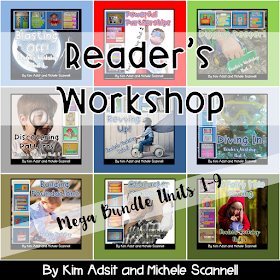- We want to teach our kids the importance of getting ready to read a book before actually starting to read the words. We want them to warm up before they read by taking picture walks, telling a story through pictures, and thinking about words they may see as they are reading.
- We also want them to start using letter sounds to figure out words. We want our kids to learn to use pictures and beginning letter sounds to read words. We also want them to know how to “switch it up” if a word they see does not match what they think it should be. And, we will show them how to look all the way through a word to confirm their word choice and how to stretch out and blend letter sounds to read words.
- We want them to know the importance of rereading to figure out a word, to understand what they are reading, to sound like a good reader and to have fun.
- And finally we wanted them to knw how partners work together as readers. We want them to know how to actually become like a teacher, helping their partners with picture walks, figuring out words and asking and answering questions.
Construct a Unit Overview
Take some time at the beginning of the unit to plan out the month. This is when you decide what are the key points you want to teach. Then, unpack the key points and think of the 4-5 topics for your mini lessons. Here are the themes we are using each week to match these 4 main goals:- Week one- “Revving up to read"
- Week two- “Letters help us read”
- Week three- “Back up and reread”
- Week four- “Partners can be teachers”
Develop Anchor Charts
Develop anchor chart to bullet your lessons. Anchor charts are used by you and the children as a reference throughout the unit. You will be referring to the chart daily and as questions arise during work time. Here is the anchor chart we are using for Week 1. Look at the detail of this plan! For effective mini lessons, since they only last 10 minutes, it is important that we think through the lesson and script out our plan. Good scripting leads to effective lessons! Each of the bullets on the anchor chart will be a separate lesson. When we are scripting our lessons, we follow a pattern. Here is the pattern for effective mini lessons:
- Connect: "Remember yesterday when we.." For this portion of the lesson you are quickly reminding the children what you did yesterday.
- Teach: "Today I am going to show you..." For this portion of the lesson you are naming the standard. Then, you model. I always try to remember that modeling means you become the reader. You show the children what it looks like and you share your thinking out loud.
- Active Engagement: "Now it's your turn." For this portion of the lesson the children practice the new learning. This is the most important portion. It is here that we can determine if children have mastered the teaching. It helps us plan where we need to go next, who we need to pull for small group, and the effectiveness of our lesson.
- Link: "Remember boys and girls, today and everyday, good readers..." For this portion of the lesson, you are reminding children of the new learning.
At the end of each unit we celebrate. It is a way to wrap up a unit before introducing a new unit. For Unit 5 we made these cute truck. We stapled 3 stack of paper to the truck. The kids wrote the letters for each section. Then, they can flap the letters to make tons of real or nonsense words!
These ideas are from Unit 5 Revving Up.
We have also bundled all of our Reader's Workshop units here.









Looks great! Love the chart!
ReplyDeleteJennifer
First Grade Blue SKies
I absolutely LOVE these units! They are perfect for me & my kinders!! Thank you so much!!
ReplyDelete~Jen
Jen's Kinder Kids
Come by my blog to win SCENTOS markers!!
Is this for Prek too?
ReplyDeleteThe units are written for kindergarten. However, many prek and first grade teachers are able to use parts of the units. I think Units 1, 2 and 4 are perfect for prek.
ReplyDelete